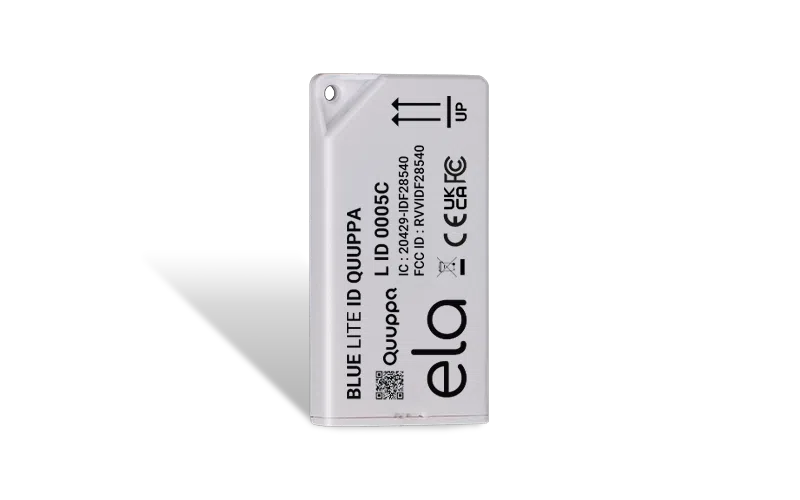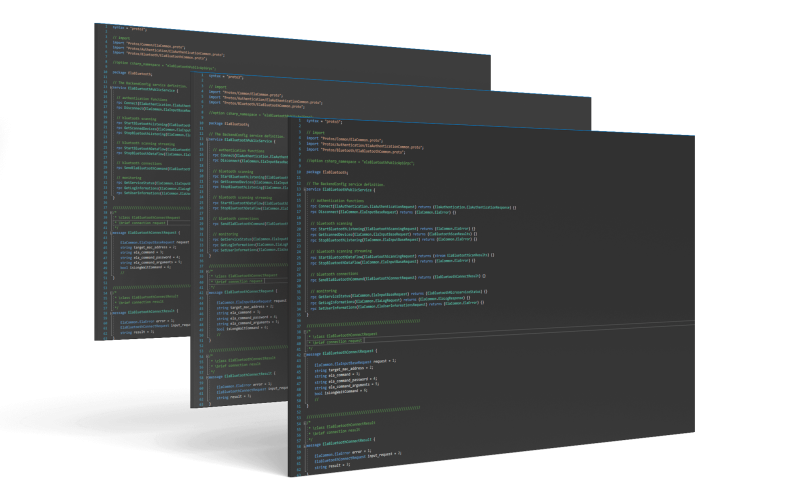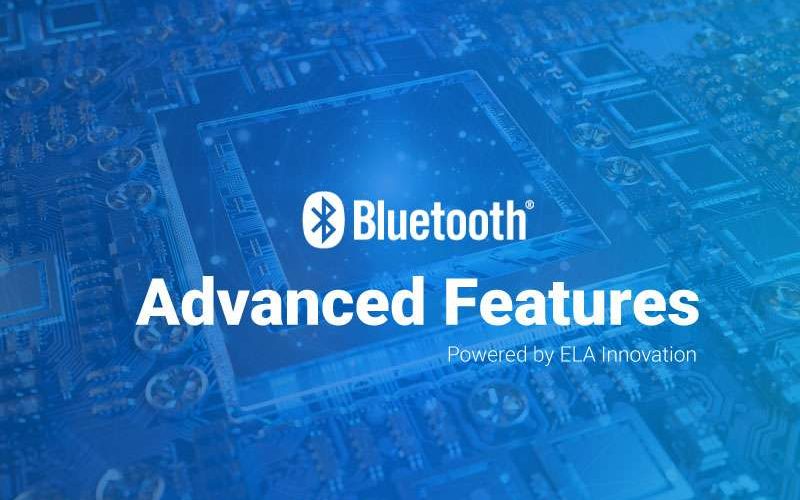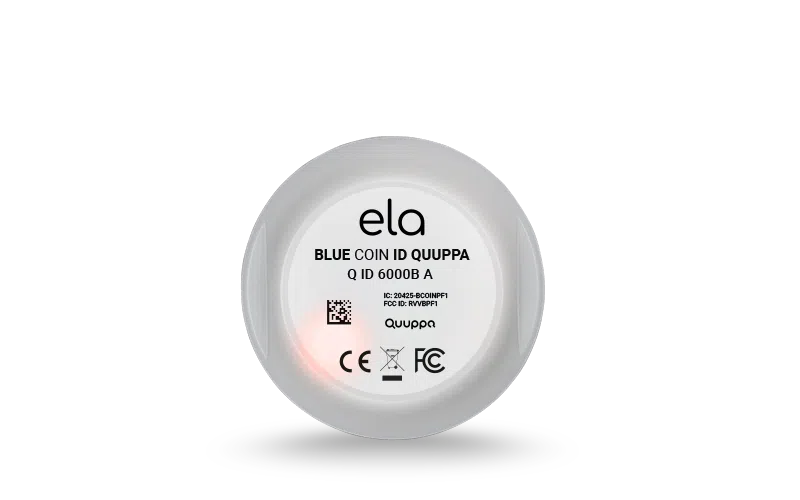Beacons & location Tags
Discover our industrial beacons and tags dedicated to asset tracking solutions.
Which beacons or location tags to choose?
The choice of one technology over another will be determined by various criteria, such as the need for location accuracy, position refresh responsiveness, and the IT infrastructure required, which will influence the cost of acquiring the overall solution.
Bluetooth Low Energy beacons

Blue COIN ID
Small equipment identification
Ø 36mm – 5 years of autonomy
Indoor and outdoor use

Blue LITE ID
Small equipment & people identification
Replaceable battery – 5-year runtime
Indoor and outdoor use
NEW

Blue LITE TOUCH
Driver and passenger identification
Push button – Replaceable battery
Indoor and outdoor use

Blue PUCK BUZZ
Identification of major equipment and people
Ø 57mm – LED & BUZZER – 18 years of autonomy
Indoor use

Blue PUCK ID
Major equipment identification
Ø 57mm – IP68 and IP69K – 20-year runtime
Indoor and outdoor use
Wirepas Mesh location tags

Blue PUCK ID+ Mesh
Industrial equipment identification
Ø 57mm – Integrated LED – 20 years of autonomy
Indoor use

Blue LITE ID+ Mesh
Small equipment & people identification
Replaceable battery – 6.5-year runtime
Indoor use

Blue COIN ID+ Mesh
Identification of small equipment & tools
Ø 36mm – Integrated LED – 3-axis accelerometer
Indoor use
Location tags Quuppa AOA


Blue LITE ID Quuppa
Small equipment & people identification
Replaceable battery – 5-year runtime
Indoor use
Criteria | Bluetooth Low Energy | Wirepas Mesh | Quuppa AOA |
|---|---|---|---|
Precision | 5 to 10m | < 5 to 10m | <1 m |
Reactivity | sth sec. to sth min. | sth sec. to sth min. | < 1 sec. |
Acquisition costs | Low | Medium | High |

The geolocation of equipment and people accounts for over 70% of digitalization projects in industrial companies. Thanks to our beacons and location tags, it’s possible to geolocate all types of equipment indoors. From tools and construction equipment (jackhammers, excavators, etc.) to medical equipment (stretchers, defibrillators, syringe pumps) and logistics equipment.
Recognized for their ruggedness and very high autonomy, our beacons are perfectly suited to harsh environments. We have developed a wide range of beacons and industrial tags based on different localization technologies (BLE, Wirepas Mesh, Quuppa AOA or RFID Active), enabling them to be perfectly adapted to the needs and constraints of each industry.
What is a location tag?
A location tag is a stand-alone beacon that uses various wireless communication technologies, such as Bluetooth Low Energy, Wirepas Mesh or QUUPPA AOA (Angle of Arrival) technology.
The beacon is a small, battery-powered radio transmitter that transmits signals at regular intervals, defined as radio waves. Each beacon emits a unique identification number (NIU) to distinguish it from other beacons in the vicinity.
A location tag consists of a case a few centimeters in diameter, containing a battery and an electronic board featuring a microcontroller, a radio module, an antenna and various sensors (e.g. an accelerometer or a buzzer).
What are location tags for?
Indoor location solutions are based on IT infrastructures integrating connected objects such as beacons and location tags. These wireless communication beacons associate an identifying number (that of the beacon/tag) with a piece of mobile equipment or a person.
Thanks to various indoor positioning algorithmsIt will be possible to position a beacon or tag in real time on a map (such as Google Maps), and thus the person or equipment with which it is associated. What’s more, a beacon/location tag can be used to collect a wide range of data, enabling companies to improve personal and equipment safety, reduce maintenance and production costs, and optimize supply flows.
What is indoor geolocation?
When we think of geolocation, we often think of satellite positioning systems such as GPS (Global Positioning System). But this positioning technology is mainly dedicated to outdoor use, as the signals emitted by satellites are difficult to pass through obstacles. Although some GPS components can receive a signal inside buildings, it is so weak that it is too inaccurate to be reliable or usable. Furthermore, the reference system is very important in the choice of systems. In outdoor environments, data is represented in 2D, latitude and longitude, which cannot be used in indoor spaces.
With the digitization of processes, real-time tracking of indoor assets has become a real performance driver for companies. To meet this need for traceability, indoor geolocation solutions have been developed.
Why use indoor geolocation?
Indoor geolocation represents a real challenge for many business sectors. The applications are numerous and constantly expanding, in fields such as healthcare, construction and industry 4.0. In particular, indoor geolocation meets the challenges of personal and property safety, as well as the need to optimize costs linked to equipment purchases, production delays or worksite deliveries. Indoor localization is becoming a genuine lever for overall corporate performance.
Which indoor positioning technology is right for you?
There are a number of different indoor tracking systems to suit different needs. To understand which indoor localization system to choose, you need to consider a number of variables, such as the localization accuracy required, coverage, infrastructure costs, the number of objects or people to be localized, or the position refresh time.
Find out more about 3 indoor localization technologies used at ELA Innovation below.
The Bluetooth Low Energy protocol is an open wireless communication technology embedded in all smartphones, making it easy to deploy IoT solutions incorporating BLE beacons.
BLE location beacons will transmit at regular intervals. When in proximity to a Gateway (smartphone, PC, access point, etc.) they will be scanned by it. This detects their presence in an area, and thus their position.
Data is collected by the nearest gateway and transmitted to the client server. The data is then visualized on a business application in the form of a map or dashboard.
This technology offers localization accuracy of around 5 to 10m, depending on the environment in which the IoT infrastructure is deployed.
Wirepas Mesh technology is a software brick based on position calculation according to received signal strength (RSSI). This indoor positioning algorithm is based on a very simple infrastructure consisting of a mesh network of fixed and mobile wireless tags, and a gateway for centralizing data on client servers.
Mobile tags are installed on equipment or carried by the people to be located. Fixed tags, also known as anchors, are fixed at regular intervals to the building’s walls, providing reference points for position calculation. The tags communicate with each other by bouncing raw data back to the gateways. This information is then processed and transformed into GPS coordinates by the Wirepas Positioning Engine tool, making it easier to understand.
This technology offers location accuracy of up to 5 meters, which is sufficient for many applications. Indeed, once within the 5-meter zone, the equipment or person to be located is within sight and therefore easily identifiable.
The ease of installation of this type of solution, which requires no cabling, ensures very competitive installation costs, and means that the size of the network can be adapted very quickly by adding new location beacons.
Quuppa AOA (Angle Of Arrival) positioning technology is one of the RTLS (Real Time Locating System) solutions based on calculation of the angle formed between a locating beacon and an antenna in a 3D reference frame. To operate, this technology relies on an infrastructure made up of location beacons attached to the equipment to be tracked, and 360° antennas fixed high up to cover a maximum surface area. Once the data has been collected by the antennae, it is processed and analyzed by Positioning Engine software, transforming it into intelligible data that can be visualized on a map and in the form of dashboards.
This calculation method enables a location accuracy of less than 1m with a latency of less than 1 second, which is particularly suitable for tracking small items of equipment such as tools.
Other indoor localization technologies, such as Ultra Wide Band, also have interesting technical features, enabling them to deliver very high localization accuracy, but can quickly add up in terms of installation costs.
How do I install ELA Innovation location tags?
Thanks to the range of accessories developed by ELA Innovation, installation and use of the beacons is quick and easy. The various fastening systems are secure for industrial use, with no risk of the beacon becoming detached.
For PUCK and COIN format products, there are multi-fixing holders called respectively PUCK Holder Sticker and respectively. COIN Holder Sticker.
These accessories include a beacon holder, high-performance double-sided adhesive, a locker and a TORX security screw. The locker and screw secure the beacon in its holder. This is particularly suitable for use where shock or vibration may be encountered.
Thanks to their multi-fixing system, PUCK and COIN can be installed in 3 different ways on a wide range of materials (concrete, wood, plastic, metal, etc.):
- Bonded with double-sided adhesive
- Fastened with 2 screws
- Fastened with nylon clamps
LITE and SLIM cases can be glued to smooth surfaces thanks to their double-sided industrial adhesive, for indoor use. They can also be attached to key rings.
The AERO format box can be mounted in 3 different ways:
- Bonded with double-sided adhesive
- Fastened with 2 screws
- Fastened with nylon clamps
Our resources

SDK & code samples
Discover our software development kit (SDK) including microservices, APIs, sample code using these APIs and associated documentation. Also available are code examples compatible with different development environments.

Bluetooth Advanced Features
With the Bluetooth Advanced Features option, you can accelerate the deployment of your business solution and guarantee customer satisfaction. This service enables you to customize 100% of the frame of your ELA Innovation beacons & sensors. Configuration is carried out by our factory teams.

IoT blog
Discover our IoT Blog dedicated to technological innovations. Here you can expand your knowledge of wireless communication technologies and discover the many worlds in which our products are used.







